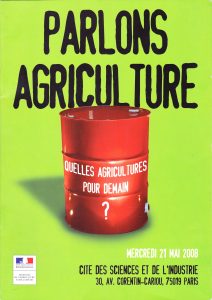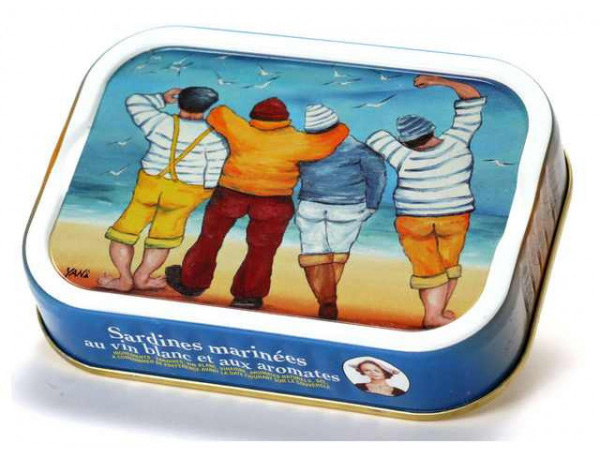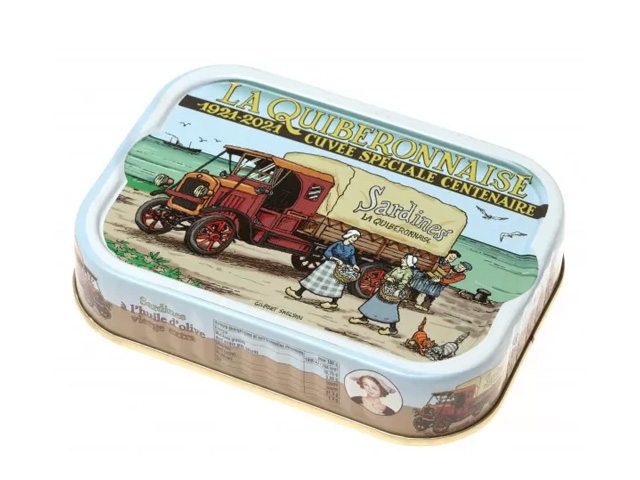On April 23, 2008, Michel Barnier greeted hundreds of French citizens in Paris, who were disturbed by the farm minister’s use of a contentious image to promote a series of conferences about food. “We don’t live on burgers or fast food,” one lady grumbled, staring at a picture of a discarded burger box bearing the words “Qu’est-ce qu’on mange ?” (“what are we eating?”) Collectively, the conferences were promoted under the title “Parlons agriculture” – ‘let’s talk about agriculture’. The graphics are challenging, particularly for rural populations: as well as the burger box image you can see on this page, elsewhere in the posters and conference literature, there is a battered steel barrel that has not just seen better times, but is clearly toxic.
Starting with the blue booklet on this page, we will unpack the arguments and economics that were shaping agriculture in 2008. Here are the opening words from the minister: “Current events have just reminded us, with terrible consequences, that the world has yet to get rid of the scourge of famine. Egypt, Morocco, Indonesia, Cameroon, Mexico, Bolivia, every continent on the planet is seeing a resurgence of food riots, which harden men’s resolve and leave behind the smouldering wreckage of civilisation. History is being wrapped up in front of us as the world’s raw material prices rise in brutal leaps and bounds, food prices are soaring, traders all over the world are panicking. Rice, a basic food for half the world’s population was at the heart of this. Prices had risen by 54% since January (he was speaking in April) and major exporters were holding back their export tonnages. Today, three billion people live on less than two dollars a day, and the spectre of hardship hangs over them.”
Nearer to home “…hunger has been avoided for a long time, we think that shortages have become a thing of the past and there is an illusion of food security.” Look again and you will recall “mad cow disease”, alongside avian flu, arising from instances where feeding same-species animal remains have put human health in danger.
“In these times of great doubt, we need to bring together those who produce and those who consume, we need to end the mistrust between two worlds that have stopped talking to each other.”
Nowadays, [2008] …”wherever we live, a big question hangs over the new century: how do we feed humanity to ensure health and sustainability? Barnier argues that we can no longer afford to live in ignorance of past mistakes, guzzling saturated fats and rich foods can no longer be indulged. This is the underlying purpose of the conference: we need to share and exchange resources; weave a dialogue of a sort that has never been seen before; making it possible for agriculture to rejoin the rest of the world.
This morning (23-NOV-2025) I reposted a call to action made by Morgan, a radical peasant farmer. Speaking to camera, she calls on President Macron to head up a pan-European campaign to stop fruit growers being put out of business by cheap imports from Latin America. France has a strong enough voice to make itself heard on the international scene, Morgan argues. France should stop dreaming of its past glories and wake up to a very real threat, she warns.








